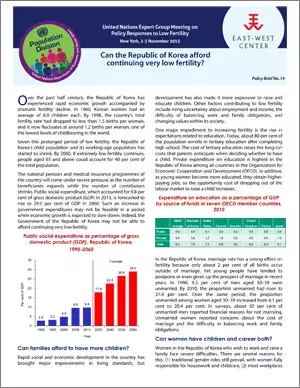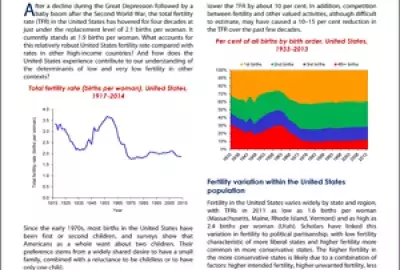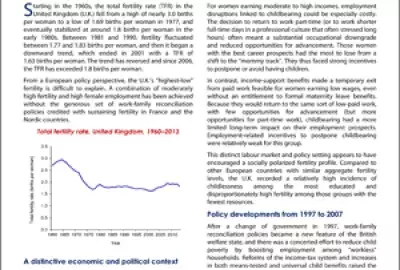Error message

Over the past half century, the Republic of Korea has experienced rapid economic growth accompanied by dramatic fertility decline. In 1960, Korean women had an average of 6.0 children each. By 1998 the country's total fertility rate had dropped to less than 1.5 births per woman, and it now fluctuates at around 1.2 births per woman, one of the lowest levels of childbearing in the world. Given this prolonged period of low fertility, the Republic of Korea's child population and its working-age population has started to shrink. By 2060, if extremely low fertility continues, people aged 65 and above could account for 40 per cent of the total population. The national pension and medical insurance programmes of the country will come under severe pressure as the number of beneficiaries expands while the number of contributors shrinks. Public social expenditure, which accounted for 9.8 per cent of gross domestic product (GDP) in 2013, is forecasted to rise to 29.0 per cent of GDP in 2060. Such an increase in government expenditures may not be feasible in a period when economic growth is expected to slow down. Indeed, the Government of the Republic of Korea may not be able to afford continuing very low fertility.
|
Over the past half century, the Republic of Korea has experienced rapid economic growth accompanied by dramatic fertility decline. In 1960, Korean women had an average of 6.0 children each. By 1998 the country's total fertility rate had dropped to less than 1.5 births per woman, and it now fluctuates at around 1.2 births per woman, one of the lowest levels of childbearing in the world. Given this prolonged period of low fertility, the Republic of Korea's child population and its working-age population has started to shrink. By 2060, if extremely low fertility continues, people aged 65 and above could account for 40 per cent of the total population. The national pension and medical insurance programmes of the country will come under severe pressure as the number of beneficiaries expands while the number of contributors shrinks. Public social expenditure, which accounted for 9.8 per cent of gross domestic product (GDP) in 2013, is forecasted to rise to 29.0 per cent of GDP in 2060. Such an increase in government expenditures may not be feasible in a period when economic growth is expected to slow down. Indeed, the Government of the Republic of Korea may not be able to afford continuing very low fertility.
|
Policy Briefs - United Nations Expert Group Meeting on Policy Responses to Low Fertility







